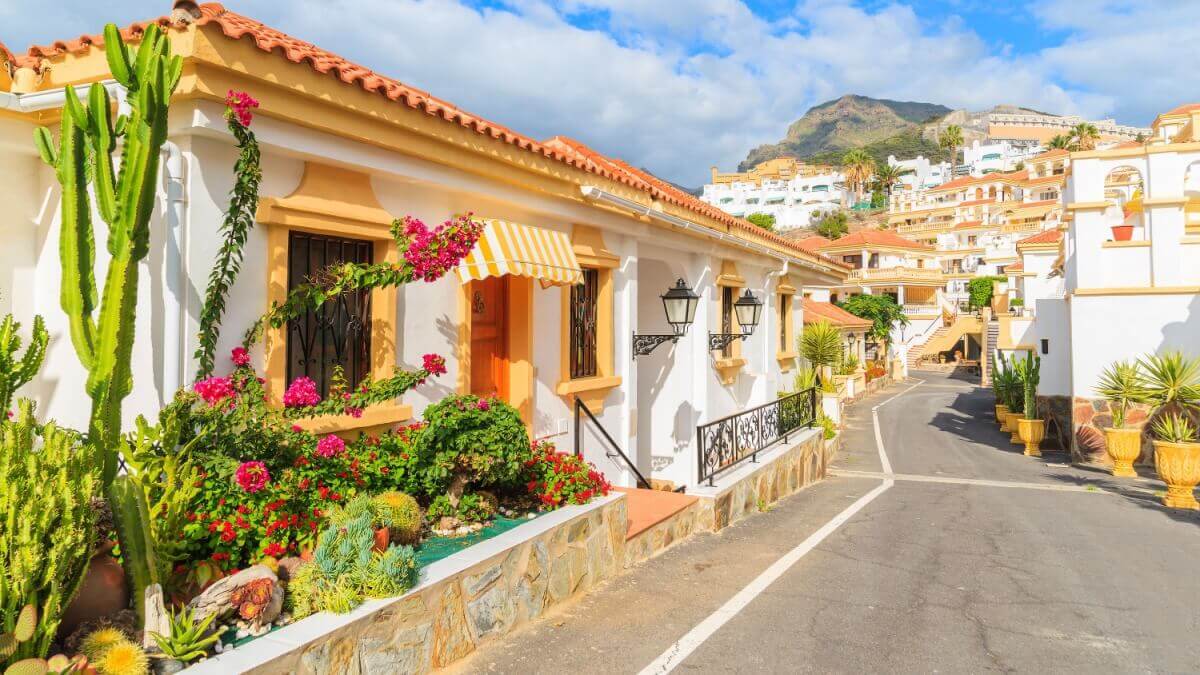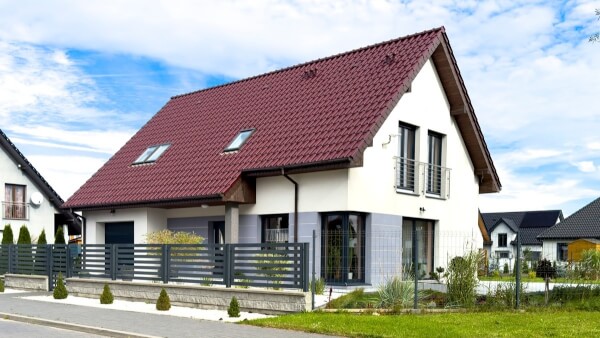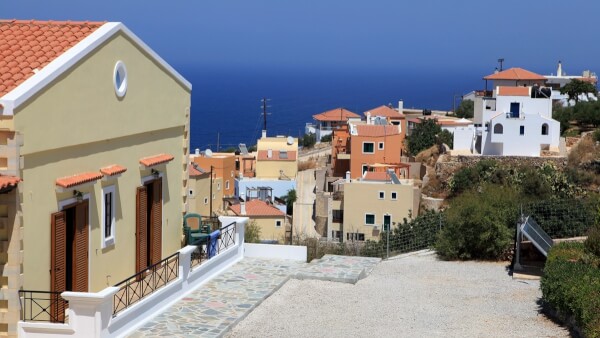Property tax in Pakistan for foreigners (UK guide)
Read our essential guide to property tax in Pakistan for foreigners and UK expats, including taxes on buying, selling and renting out property.

Sun, sea and sangria make Spain a popular holiday destination - and also a hot choice for those looking to study, work or retire abroad.
If you’re looking to buy a property in Spain, one of the first things you’ll need to know is how to get a mortgage.
We’ve put together a full guide to getting a mortgage in Spain for UK citizens, whether you’re living in Spain or not. We’ll cover fees, what documents you’ll need, the latest mortgage rates in Spain and how to apply.
Also, if you’re looking for ways to save money on currency exchange when sending a down payment or mortgage fees to Spain, check out the money services provider Wise. You can send large transfers with Wise for low fees* and great mid-market exchange rates - making it ideal if you’re sending a secure international transfer.
There are no laws or rules preventing foreign citizens buying property in Spain, but how easy is it to get a mortgage as a non-resident?
The good news is that many Spanish mortgage providers will lend to foreigners, and there aren’t usually any restrictions on nationality.
However, it depends on the product. Some mortgages are aimed at buyers from particular countries, or for properties in particular regions.
What you will need as a non-resident is a foreigner tax number, known as a Número de Identificación de Extranjeros (NIE).¹
There are some other important things to be aware of too. The first relates to the loan-to-value (LTV) ratio - essentially, how much the provider is prepared to lend you, compared to the value of the property.
Lenders in Spain tend to prefer lending to Spanish residents. To this end, they let residents borrow up to 80% of the property’s value, as assessed by the provider.¹
But for non-residents, this drops to around 50-70% depending on the type of mortgage.¹ This means you’ll need a higher deposit, as you won’t be able to borrow as much.
What’s more, non-residents may have to pay higher interest rates than Spanish citizens and permanent residents.
There may also be a few differences in the criteria for applying for the mortgage. Getting a mortgage in Spain may be easier for EU citizens than for those applying from outside of the EU.
Spain is quite relaxed in letting foreigners and non-residents buy property and apply for local mortgages, whether or not they are EU citizens (although the application process may be easier for EU citizens).
So in this respect, the UK leaving the EU hasn’t made much difference to the process of getting a Spanish mortgage as a UK citizen.
But there is an important Brexit-related change you need to know about if buying property in Spain.
It’s called the 90-day rule. It stipulates that non-EU citizens and non-Spanish residents can only spend a maximum of 90 days per 180 day period in Spain. This means you may have a second home in Spain, but you’ll be restricted to how much time you can actually spend living in it - unless you actually move to Spain and make the country your permanent home.¹
The eligibility criteria for mortgage applications will vary between lenders, although you’ll generally find that it’s similar to the UK.
You’ll usually need to meet the following requirements:²
If you meet the criteria, getting a mortgage in Spain can be relatively straightforward. Be prepared for plenty of paperwork though.
However, there are some challenges that can make it more difficult.
For starters, you may struggle if you’re not a fluent Spanish speaker. It could be sensible to enlist the services of an English-speaking broker, translator or Spanish-speaking friend. And if your documents are in another language, they’ll need to be translated and certified.
You may also face complications if you have a poor credit history or too many debts. Some lenders may also be unwilling to lend to you if you’re self-employed or a digital nomad, or have just started a new business and don’t have many financial records.
And for non-residents, the process can be more complicated, with more requirements for documentation or extra information. This can slow down the process.
To give you an idea of what to expect, here’s a step-by-step look at the process of applying for an Spanish mortgage as a foreign national:³
| 💡 Read more: Taking cash in or out of Spain: What are the rules? |
|---|
The exact documents you’ll need to apply for a mortgage in Spain will vary between lenders.
But here’s an idea of what you’re likely to need:¹
On average, it takes around 6-8 weeks to get approved for a mortgage in Spain.⁴ It’s crucial to make sure all your paperwork is in order before starting the process, to help you avoid any delays.

Applying for a mortgage in Spain usually involves some fees. But the good news is that the lender will pay many of them, with applicants only really needing to pay two main costs - a valuation fee and an arrangement/completion fee.
In most cases, a valuation of the property will need to be carried out, and the buyer is responsible for the fee. It’s usually around €300 to €500.⁵
It’s important to note that this valuation survey only looks at the value of the property, and won’t identify any structural, maintenance or other issues. You’ll need to commission your own building survey for that.
Also known as the product fee or completion fee, this is the main fee for taking out the mortgage.
It’s charged on completion, and varies by lender, mortgage product and the size of the loan. You can expect to pay up to 1% of the loan amount in arrangement fees.
You may also encounter some of these other costs when applying for a mortgage in Spain:
If you’re a Spanish resident, you should have the same choice of mortgages as a Spanish citizen. The requirements for application are also likely to be similar.
But as a non-resident, you may find the pool of available mortgage products is smaller. Not every bank in Spain offers non-resident mortgages, with banks such as BBVA tending to offer their products to Spanish residents only.
To help you start your search, here are a few Spanish banks which do offer mortgages to non-residents and foreign expats:
| 💡 Read more: How to transfer large sums of money between bank accounts? |
|---|
On average in 2024, mortgage rates in Spain are between 3.5% and 4.5%.⁵
Remember though that mortgage rates fluctuate regularly - so you’ll need to check the updated rates when you’re ready to apply for your mortgage.
The rate you’re offered will also depend on your circumstances and eligibility, the amount you’re borrowing and how much of a deposit you have.
You might find it difficult (although perhaps not impossible) to get a mortgage in the UK to finance your property purchase over in Spain. Not many UK banks and lenders offer what are often known as ‘overseas mortgages’, so you’ll need to do some shopping around.
You could also look at remortgaging an existing property you own in the UK, borrowing more to raise funds for your purchase in Spain.
Crucially, you should only do this if you can afford the repayments. It could also be a good idea to seek professional financial advice first.
Buy-to-Let mortgages don’t really exist in Spain, like they do in the UK.
If you’re new to the concept, these are mortgages designed specifically for buying property as an investment, which you intend to rent out to tenants.
In Spain, there aren’t usually any restrictions on residential mortgages which prevent the property being rented out.
It’s also possible to remortgage a property in Spain, although it isn’t as common there.
An increasing number of Spanish lenders are starting to accept transfers though. This lets you switch to another provider to get better interest rates once you’ve built up equity in your home.
Remortgaging can also help you borrow more money, such as to fund another property purchase without having to sell your first property.
You’ll just need to make sure you can afford the repayments and aren’t overstretching yourself.

There are a few different mortgage types available in Spain, and it’s important to choose the right one for your circumstances.
The main types to know about are - fixed-rate mortgages, variable rate mortgages, and mixed-interest rate mortgages. Spain also has specialist mortgage options for seniors.
Additionally, there are different ways to repay, including interest-only options.
A fixed-rate mortgage has a fixed interest rate for a set period, which in Spain is usually 15 or 30 years. This means you’ll know exactly how much you’re repaying each month.
This type of mortgage has a variable interest rate, which is linked to the Euro Interbank Offered Rate (Euribor). With variable rate mortgages, your monthly payments may rise or fall.
This kind of mortgage has both a variable and fixed rate. You’ll have a fixed interest rate for the first period of the loan (i.e. 5 years) and then be switched to a variable rate. Mixed-interest rate mortgages aren’t too common in Spain.
There are also mortgages which vary based on the way you make repayments. One type is interest-only, a less common type of mortgage in Spain where you just pay off the interest rather than the total balance owed.
If you’re planning to retire in Spain, it’s useful to know about Lifetime Loans. These are mortgages for Spanish residents over 65 who are receiving a pension. If you qualify, you can apply for this kind of mortgage to buy a home. You can also release equity from your home and convert it to cash.¹
| 💡 Read more: The best UK banks for sending money abroad |
|---|
To stand the best chance of getting accepted for an Spanish mortgage as a non-resident, bear these tips in mind:
If you’re sending your deposit and mortgage fees to Spain from the UK, you may incur hefty transfer and exchange fees when converting your British pounds to euros (EUR). This is where Wise and the Wise account can help you save money.
Open a Wise account online and you can start managing your money in 40+ currencies (including GBP and EUR). It’s not a bank account but offers many similar features.
Here’s an overview of the main benefits for using Wise: |
|---|
|
Sources used:
Sources last checked on date: 06-Sep-2024
*Please see terms of use and product availability for your region or visit Wise fees and pricing for the most up to date pricing and fee information.
This publication is provided for general information purposes and does not constitute legal, tax or other professional advice from Wise Payments Limited or its subsidiaries and its affiliates, and it is not intended as a substitute for obtaining advice from a financial advisor or any other professional.
We make no representations, warranties or guarantees, whether expressed or implied, that the content in the publication is accurate, complete or up to date.

Read our essential guide to property tax in Pakistan for foreigners and UK expats, including taxes on buying, selling and renting out property.

How much does it cost to build a house in Poland as a UK expat? Find out in our essential guide, covering everything you need to know.

How much does it cost to build a house in Greece as a UK expat? Find out in our essential guide, covering everything you need to know.

Read our comprehensive guide to buying a house abroad, including how to arrange finance for overseas property purchases.

Read our roundup of 8 of the best places to buy land in the world as a Brit, looking at average land prices, buyer’s costs and more.

Read our guide to selling property in India and bringing money to the UK, covering taxes, transfer methods and other essential information.